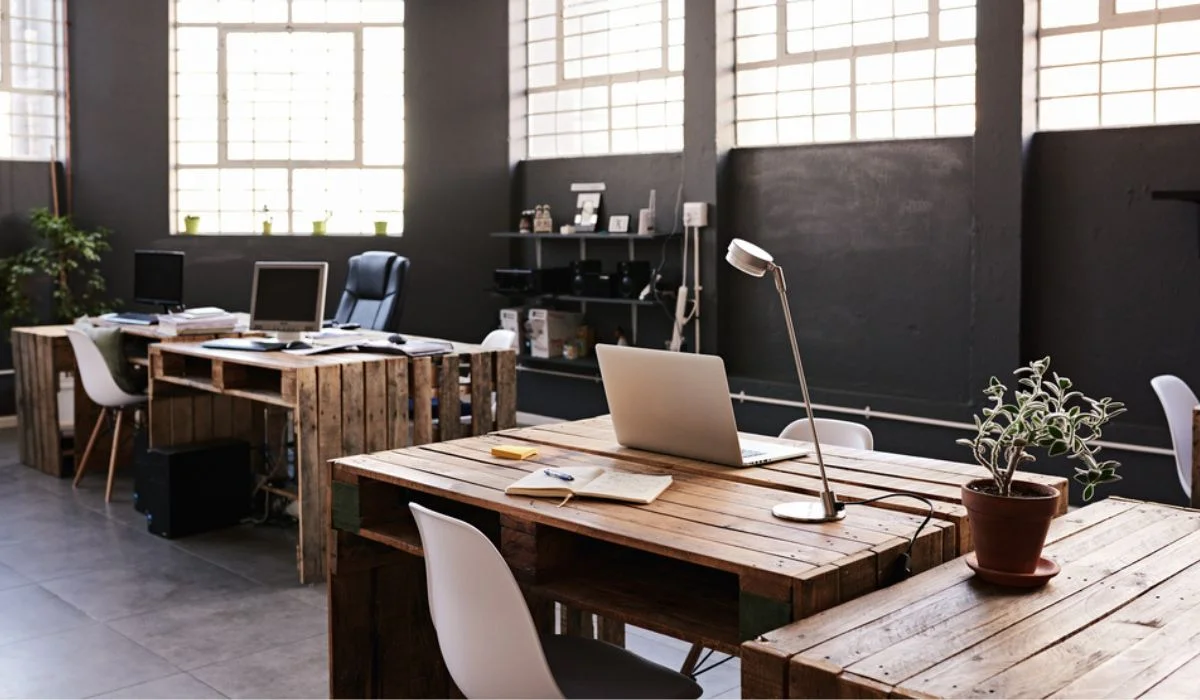
Are you constantly battling the chaos of clutter in your office? Is your workspace drowning in a sea of files and papers, and you just can’t seem to find that important report you need? Did you know you can transform your office from a chaotic mess into a productivity powerhouse?
If you’re ready to say goodbye to disorganization and hello to a workspace that breathes efficiency and productivity, this article will take you through innovative storage solutions, smart organization tips, and space-saving strategies that are functional and enhance your office aesthetics.
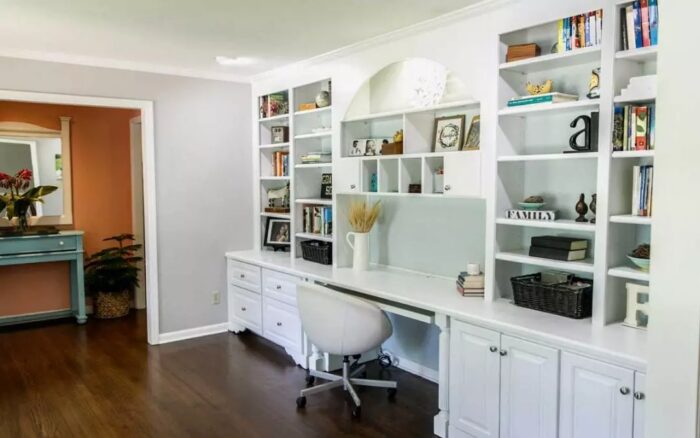
Analyze Your Office Storage Needs
Every office, regardless of its size, has unique storage needs. The first step to optimizing your office space is to accurately assess what those needs are. Take a good look around your workspace. Are there piles of paper that need to be filed? Are there office supplies strewn about?
Once you know what needs to be stored, you can easily prioritise, as not all items in your office are equally important. Some files, for example, might need to be accessed daily, while others are only required occasionally. The frequency of use should dictate where and how these items are stored. Items used daily should be within easy reach, while less frequently used items can be stored away.
You will find it in your best interests to also consider future storage needs. With time, your storage needs will change as your business grows. So, as you analyze your storage situation at present, think about what might be needed in the future to save yourself from constantly re-evaluating your storage needs and solutions.
Restructure Your Office Layout
Your office layout plays a significant role in how efficiently you can store and access items. An office layout that doesn’t effectively utilize the available space can lead to clutter and disorganization. Therefore, restructuring your office layout might be necessary.
Start by considering the workflow in your office. How you design and place your furniture and storage units should facilitate and not hinder this workflow so that if you frequently need to access a printer or copier, it should be placed near your desk, not in some far-off corner. Similarly, using a locking lateral file cabinet or shelf to house important documents should make them easily accessible.
Don’t be afraid to experiment with different layouts. Sometimes, the most effective storage solution isn’t the most obvious one. By shifting furniture around and testing different configurations, you might discover a layout that significantly improves your office’s storage capacity and functionality.
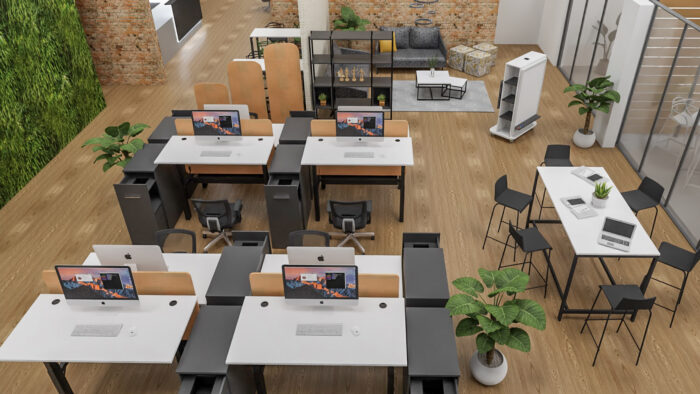
Digitize Your Paperwork for More Office Space
In this day and age, there’s no need for your businesses to drown offices in paperwork. Documents can be digitized, freeing up significant amounts of office space. Plus, the added incentive of digital files being easier to organize, search, and share makes your office more efficient.
That said, begin with knowing what documents you can digitize such as invoices, receipts, and contracts. Proceed to scan them and save them digitally in organized folders on a computer or in a cloud-based storage system.
As you go about this task, make sure you have a system in place for naming and organizing your files in order to find specific documents when you need to. Also, remember always to back up your digital files to prevent you from losing key business data.
Utilize Vertical Space in Your Office
One often overlooked aspect of office storage is the use of vertical space. Most offices have plenty of this type of space that goes unused. However, you can turn this space into a storage goldmine with a little creativity.
Shelves, for instance, are a simple yet effective solution for utilizing vertical space. They can be installed on any free wall space to hold things like files and books to office supplies. You might want to go with adjustable shelves, as they offer the freedom to customize the storage space as per one’s needs.
Vertical space can also be used for storing larger items. For example, a lateral filing cabinet can be used to store documents, while vertical storage racks can accommodate larger office supplies. By using vertical space effectively, you can significantly increase your office’s storage capacity without taking up any additional floor space.
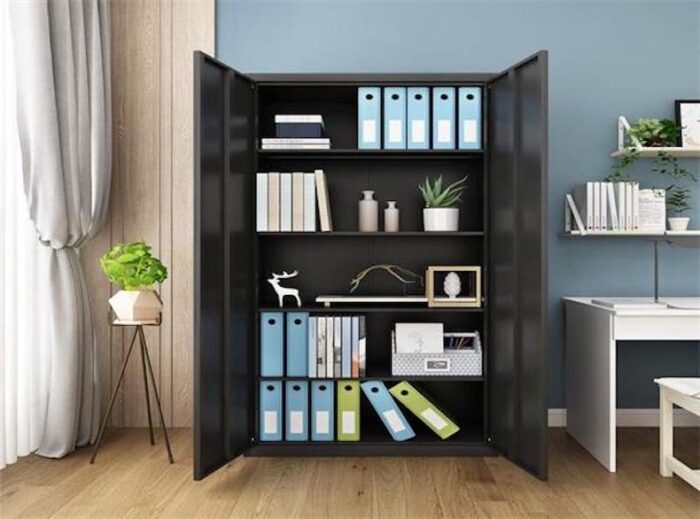
Incorporating Storage Furniture Into Your Office Design
Storage furniture is not just practical; it can also contribute to your office’s overall aesthetic. A lateral filing cabinet, for example, can help keep your workspace tidy and organized. So, look for a lateral filing cabinet with enough drawers to house your files and office supplies. This way, everything you need will be within arm’s reach, and your desk will remain clutter-free.
Other storage furniture options include bookcases, filing cabinets, and storage benches. When selecting these pieces, consider both their storage capacity and their aesthetic appeal. They should complement your office’s existing decor while also meeting your storage needs.
Bundle up Your Wires and Cables
An office with tangled wires and cables can make even the most organized space look messy. Moreover, they can take up valuable desk and floor space which can be otherwise used more effectively.
Thus, bundling up your wires and cables is a simple yet significant touch that can make a big difference in your office’s appearance and functionality. You can use cable ties and clips to keep your cables tidy and in place.
With your cables organized, you’ll have easier access to plugs and ports. You’ll also prevent them from being damaged and reduce the risk of tripping over loose cables.
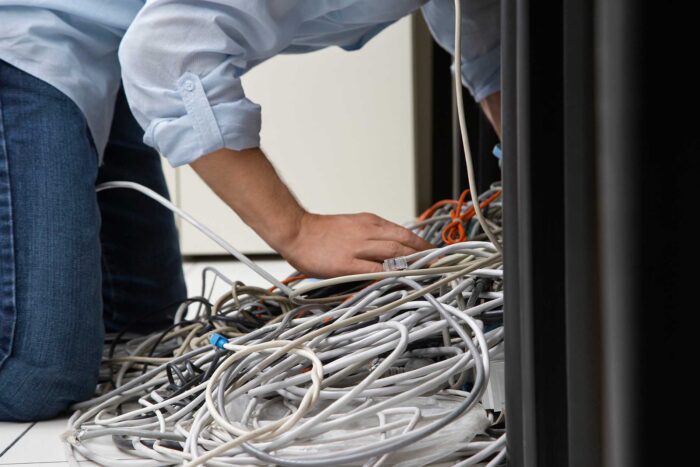
Summing It Up
In conclusion, adding more storage to your office doesn’t necessarily mean knocking down walls or investing in expensive furniture—it’s about making the most of what space is available to you, being creative with storage solutions such as buying a lateral filing cabinet, and maintaining a system of organization.
Regularly decluttering your office is also crucial. Even with the best storage solutions, clutter can still accumulate over time. So, make it habitual to go through your office every few weeks or months to rid it of anything you might not need any longer.











